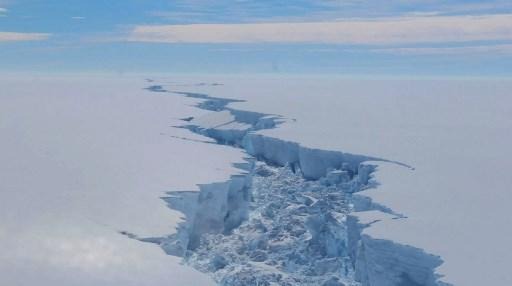Between 1975 and 2015, the Antarctic Bank expanded continuously even as the Arctic Bank kept melting. A study by a team of researchers from the Catholic University of Louvain, published on Tuesday in the Nature Communications scientific magazine, points to ocean–sea-ice feedback as a possible reason for the increase in the southernmost bank.
The team, led by Olivier Lecomte, a researcher at the university’s Georges Lemaitre Research Centre on Earth and Climate, studied variations in the temperature of the ocean at different depths. Its observations showed that in the Antarctic, there was relatively warm water under the cold layer occupying the first 100 metres below the surface. This created much higher energy transfers from the ocean to the ice than in the Arctic Ocean.
These transfers are regulated by the formation of sea ice. A change in the ice cap can thus reduce the vertical heat transfers, the researchers said in a press release on Tuesday, explaining that the heat that should rise to the surface is trapped 100 to 200 metres below and can no longer melt the surface ice in summer or limit its expansion in winter. The consequences, the researchers say, are the warming of the deep water, colder ocean temperatures on the surface and an accumulation of sea ice, a process known as positive ocean-sea-ice feedback.
According to the researchers, ocean-sea-ice feedback is thus a valid hypothesis for explaining the expansion of the Antarctic bank in the 1979-2015 period. It could also explain the drastic decrease in the same bank between 2016 and 2017 since this feedback can be inverted.
However, additional observation of the bank and of ocean temperatures is required to confirm or infirm this explanation linked to heat transfers between ocean and ice.
t
The Brussels Times

